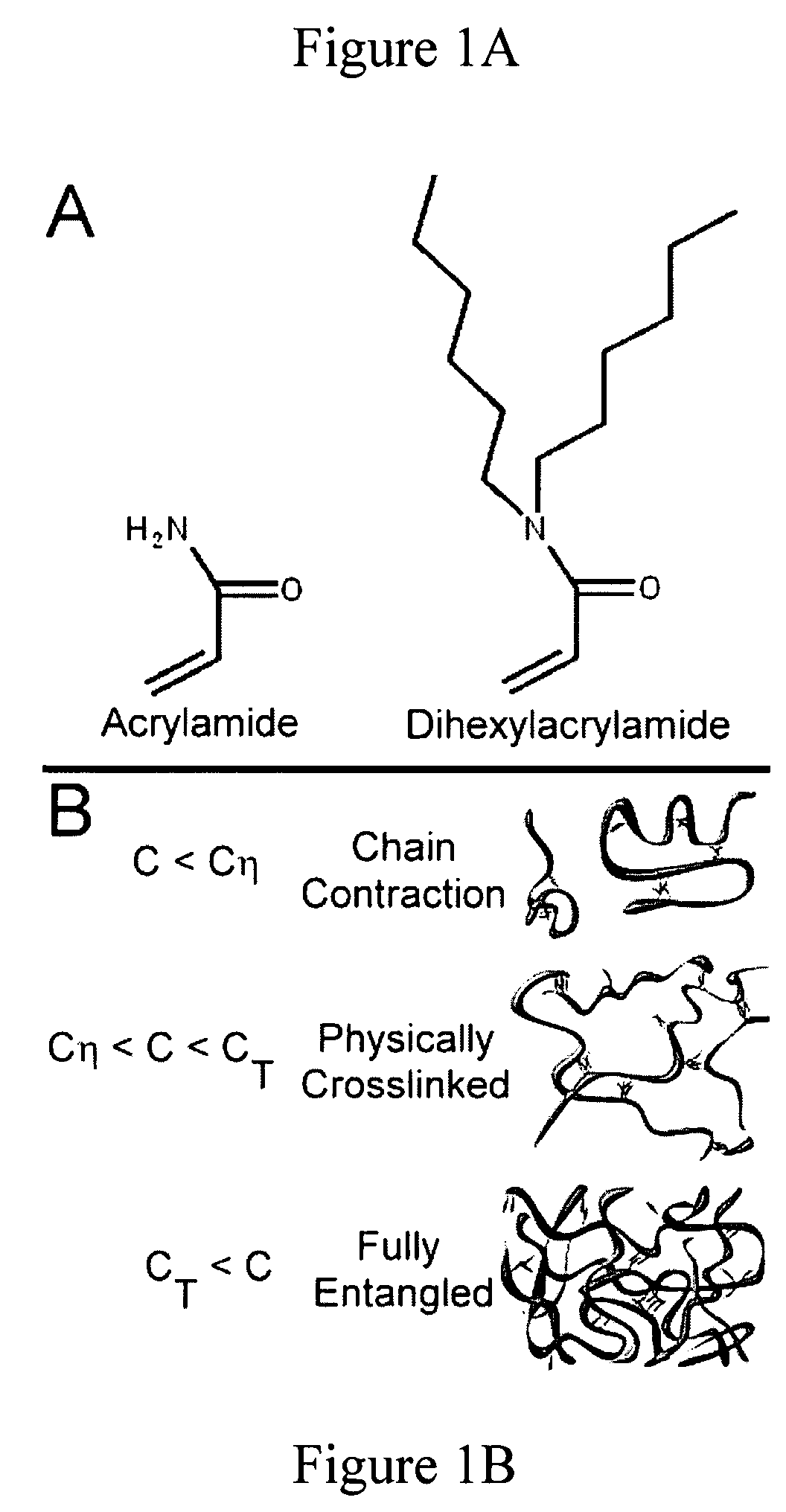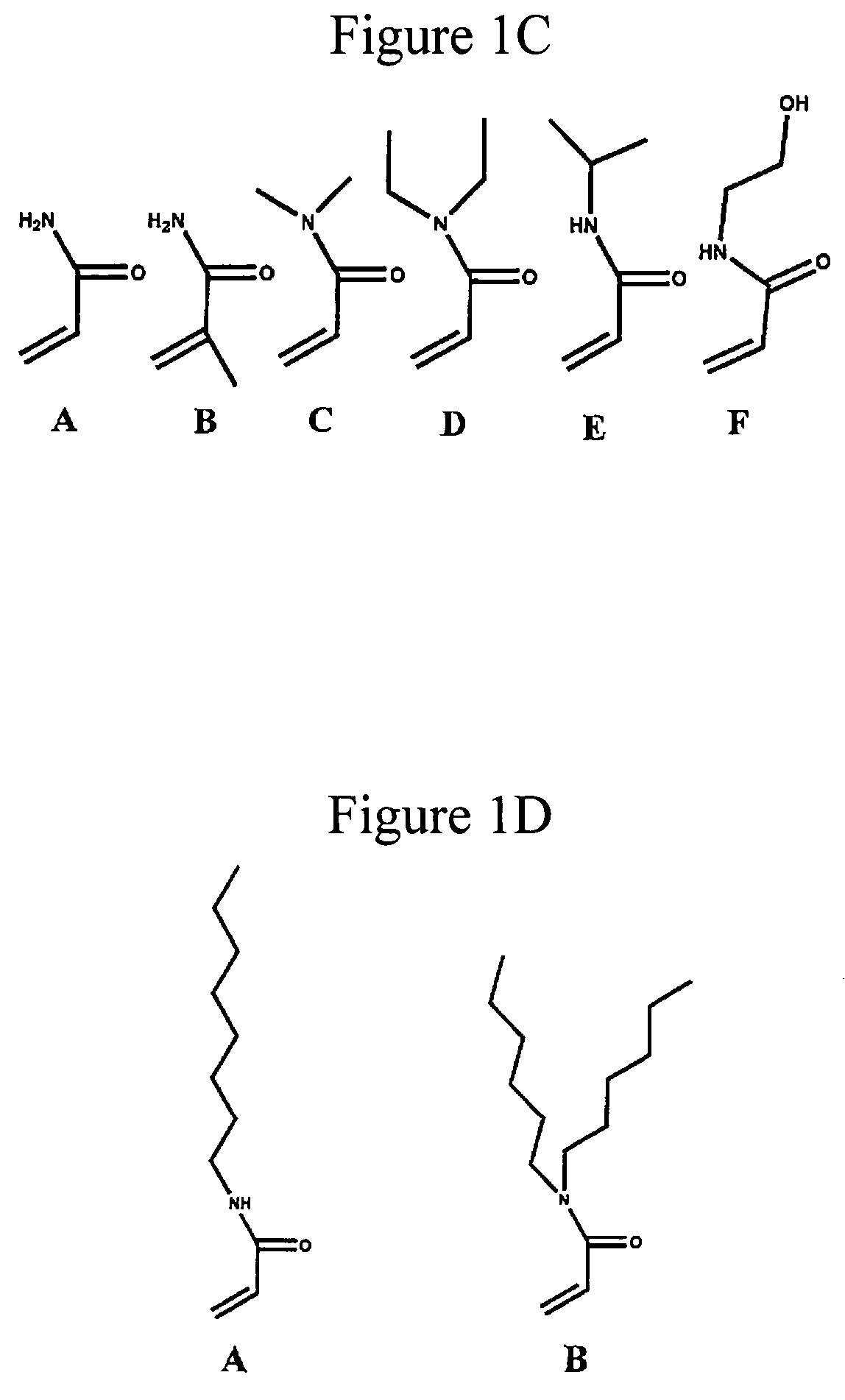Physically crosslinked copolymer compounds and related compositions and methods for electrophoretic separation
a copolymer compound and crosslinked technology, applied in the field of physical crosslinked copolymer compounds and related compositions and methods for electrophoretic separation, can solve the problems of poor separation media of acrylamide in confined microchannels, and achieve the effects of effective separation, reduced separation time, and improved separation
- Summary
- Abstract
- Description
- Claims
- Application Information
AI Technical Summary
Benefits of technology
Problems solved by technology
Method used
Image
Examples
example 1
[0066]The copolymers of this invention can be synthesized via standard free radical solution polymerization methods using aqueous solvent or with a mixture of water and slightly more hydrophobic co-solvent(s). Additionally, a solvent such as dimethylformamide may be used to dissolve all components for polymerization. Using this polymerization method a random copolymer of hydrophilic acrylamide and hydrophobic alkylacrylamide can be prepared as shown below.
example 1a
[0067]Into the solvent dimethylformamide, the following are dissolved: total monomer concentration 3 wt %, 95 mol % acrylamide content, 5 mol % dihexylacrylamide, 200 microliters of isopropanol (chain transfer agent). Nitrogen is bubbled in the solution for at least 30 minutes and then 0.02 grams of 4,4′-Azobis(4-cyanovaleric acid), ACVA are added and polymerization is initiated at 50° C.
example 1b
[0068]Into the solvent dimethylformamide, the following are dissolved: total monomer concentration 0.3 wt %, 95 mol % acrylamide content, 5 mol % dihexylacrylamide, 1 ml of isopropanol (chain transfer agent). Nitrogen is bubbled in the solution for at least 30 minutes and then 0.02 grams of 4,4′-Azobis(4-cyanovaleric acid), ACVA are added and polymerization is initiated at 50° C.
PUM
| Property | Measurement | Unit |
|---|---|---|
| molar mass | aaaaa | aaaaa |
| molar mass | aaaaa | aaaaa |
| weight percent | aaaaa | aaaaa |
Abstract
Description
Claims
Application Information
 Login to View More
Login to View More - R&D
- Intellectual Property
- Life Sciences
- Materials
- Tech Scout
- Unparalleled Data Quality
- Higher Quality Content
- 60% Fewer Hallucinations
Browse by: Latest US Patents, China's latest patents, Technical Efficacy Thesaurus, Application Domain, Technology Topic, Popular Technical Reports.
© 2025 PatSnap. All rights reserved.Legal|Privacy policy|Modern Slavery Act Transparency Statement|Sitemap|About US| Contact US: help@patsnap.com



